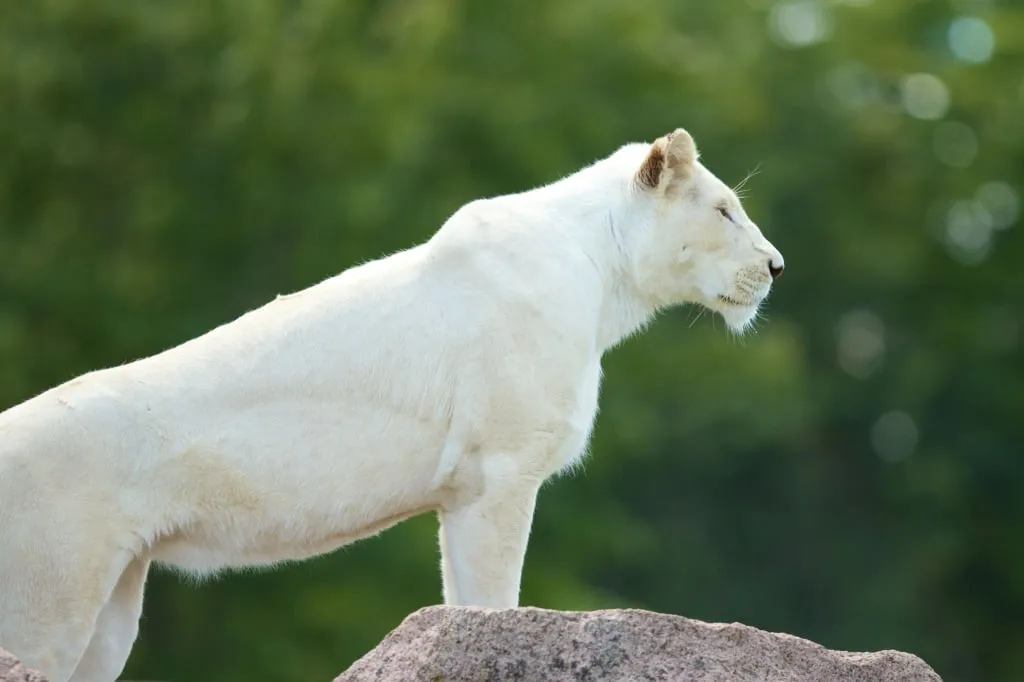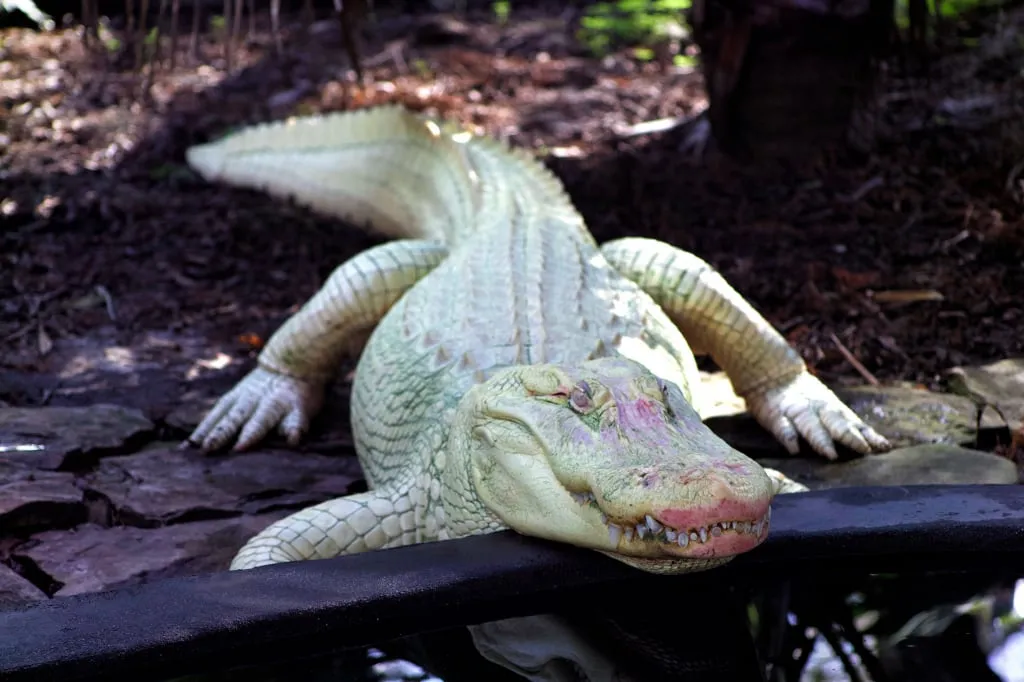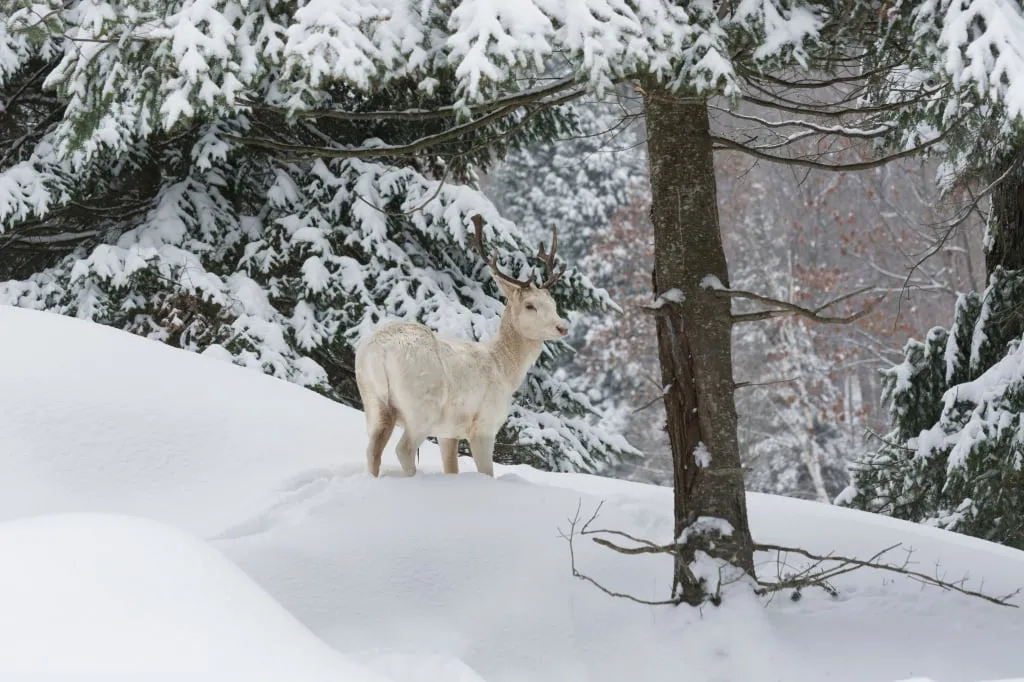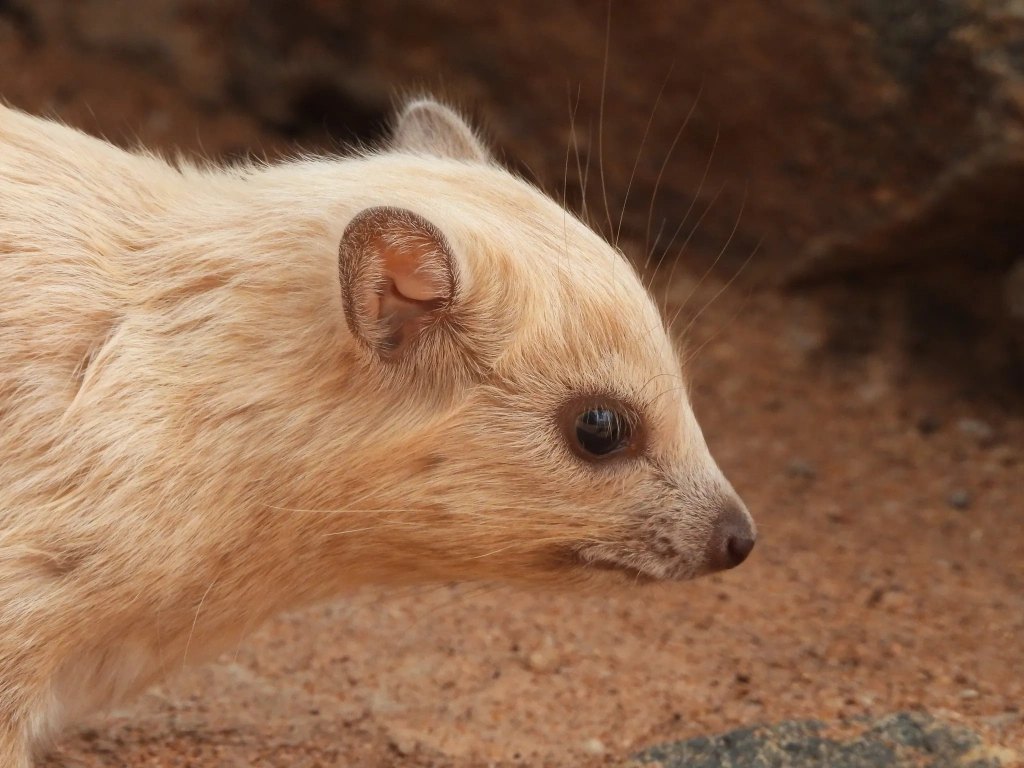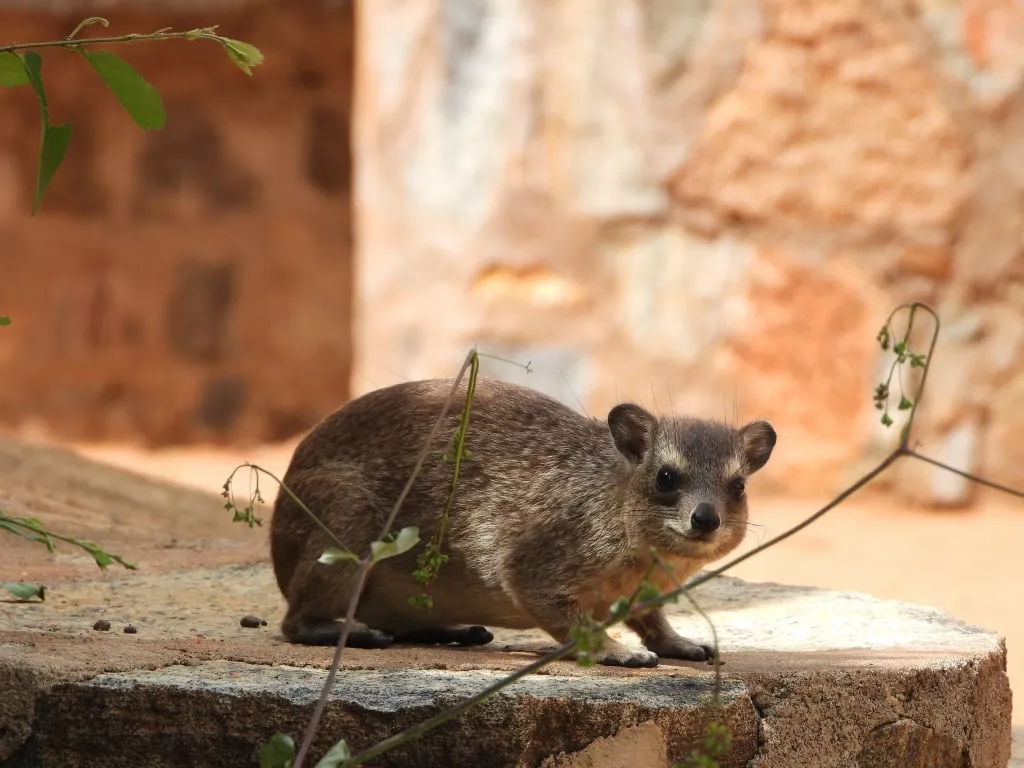In this short article, you will read about how we discovered an albino hyrax in Mkomazi National Park in Tanzania and were lucky to photograph the rare animal. Also, we will share interesting facts about hyraxes which are endemic to Africa, and how albino animals generally live in the wild.
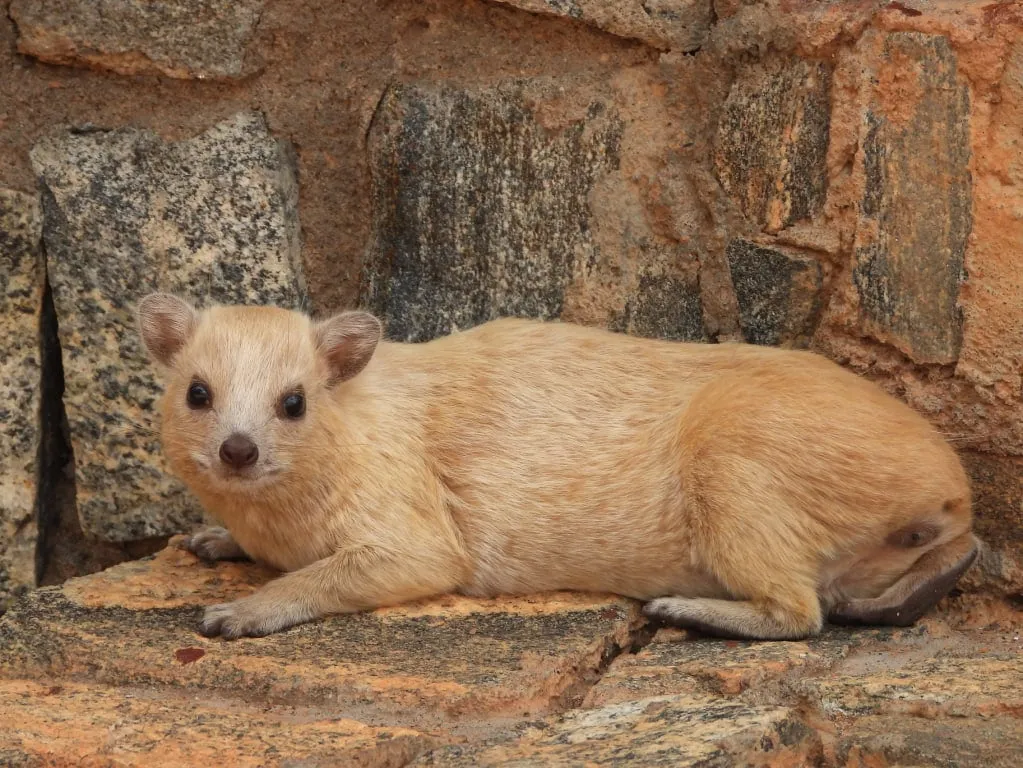
The find
In December 2022, the Altezza Travel team set out to explore Mkomazi National Park, which is located in northeastern Tanzania and borders Kenya's Tsavo West. It was there that an all-white mammal of the order Hyracoidea was unexpectedly discovered. It was an albino hyrax.
Hyraxes are small animals, similar in appearance to marmots common in North America, Europe, and Asia. Unlike marmots, however, hyraxes live in Africa, as well as in the Middle East and in the Arabian and Sinai peninsula. Several species live in Tanzania, the most common of which is the Yellow-spotted rock hyrax. In all likelihood, our albino belongs to this species, which is the only representative of mountain hyraxes. They are called “mountain hyraxes” simply because they live on rocks. During the day they seek food and bask in the hot African sun, and at night they hide in their shelters: crevices in the rocks and hollows between boulders.
Spotting an albino hyrax is a very rare event. The incidence of albinism in mammals is 1 in 10,000 animals. It is more common in birds, reptiles, and amphibians. For example, among birds, the occurrence of albinism is one in 1,764. For comparison, we can mention that the average frequency of albinism in humans is 1 case out of 17 000. But these numbers are averaged. For example, in Europe and the United States, it is close to one person in 20,000, but in Sub-Saharan Africa, the phenomenon is more common. In some regions, such as Zimbabwe, the number can be as high as one albino per 1,000 people.
What is albinism?
Albinism is a genetic trait that impairs the production of the pigments responsible for coloring tissue. In plants it is chlorophyll and in animals it is melanin. The word "albinism" itself goes back to the Latin word for "white". Indeed, animals and plants appear completely white when they are fully albinistic. You have probably met people with albinism, they have colorless skin and hair, and their eyes are most often blue or brown. Sometimes the eyes look red, this is due to the fact that the blood vessels of the retina can be seen through the colorless iris which has less melanin. So it seems that the eyes of people and animals with this condition often have a red hue. All albinos have vision problems, both humans and animals.
Albinism is inherited, requiring a match of specific genes responsible for this genetic change in both parents. Albinism can be total or partial. There are several types of this disorder leading to different combinations of the effects of low pigmentation. In addition to vision problems, carriers of albinism are more at risk for skin cancer due to a lack of natural pigment protection against UV radiation. For example, most albino alligators are thought to live only about 24 hours in the wild, unable to survive due to the damaging UV radiation.
What are the dangers of albinism in animals?
All of the above not only applies to humans, but also to albino animals - they have poor eyesight, which impairs their spatial orientation skills and reduces the speed of reaction to danger. In addition, albinos suffer from poor hearing.
As you might have guessed already, there are also many disadvantages of not having the natural coloration in the wild which has evolved to match the natural habitats. White animals are easier to spot among vegetation and in other natural environments. This means that such animals have a harder time hiding from predators. And albino predators do not have it easy either if they can be easily spotted from afar.
Albino animals are less likely to find a mate because in the wild the most attractive mate is the one whose skin, fur, or plumage is bright and distinctive. Albinos in the wild are often rejected by their family or group, and are cast out.
We can see albino animals in captivity more frequently than in the wild. Those individual animals have been found and taken at an early age since their chances of survival in the wild would have been very low. Albino squirrels are known to be the only mammals that survive successfully in the wild.
We hope our hyrax doesn't suffer because of his coloring peculiarities. After all, he doesn't need to hunt, as hyraxes are herbivores, and he lives near the Mkomazi black rhino conservation and breeding center, so it's unlikely that predators threaten him much. We will also reassure you by saying that we have seen the white-haired hyrax among other hyraxes with normal coloring, and no one showed any aggression or other signs of unfriendliness to him.
Who are hyraxes?
Hyraxes are small brownish-gray mammals with thick fur and tiny tails. The length of their bodies ranges between 30 and 70 centimeters (12 and 28 inches). They look very similar to rodents like marmots and beavers, but hyraxes are not their close relatives and belong to a different biological order. They live in Africa and can be considered endemic to this continent, except for one species, the Cape hyrax, which crossed to the other side of the Red Sea and also settled in the Arabian Peninsula and its surroundings.
All hyraxes can be divided into those that thrive among rocks and those that prefer trees. The former inhabit open spaces with rocky cliffs and large stones, leading a diurnal lifestyle, meaning they are active during the day. The latter live in forests and are nocturnal - active at night. Both feed on vegetation and hardly drink water, as they get enough liquid from leaves and young plants. Hyraxes have special muscles on their feet that can pull the skin and create something similar to suction cups on their feet. Thanks to this mechanism, hyraxes can easily climb smooth rocks and tree trunks.
Perhaps the most unusual fact about hyraxes is that they are relatives of very large mammals: sea cows and elephants. And this is confirmed both at the morphological level and at the genetic level. The fact is that they had a common ancestor which dominated Africa millions of years ago and was the most widespread animal on the continent until it was displaced by the Bovidae, primarily antelopes. To this day, antelopes are still more common in Africa than any other large animals.
Nowadays, hyraxes are not very large animals weighing from 1.5 to 4.5 kilograms (3.5-10lb). However, there were some huge animals among their ancestors, including mammals about the size of a rhinoceros weighing close to a ton. Numerous fossil discoveries indicate that ancient hyraxes lived in Asia, where they migrated across the current Arabian Peninsula like elephants, as well as in Europe.
Moreover, there is a linguistic hypothesis that the hyraxes contributed to the word "Spain". They once inhabited the Iberian Peninsula, and the Phoenicians, having visited those places, called them This is the name given by the Phoenicians to the Iberian Peninsula they discovered 1,100 years before Christ. The name the Phoenicians gave to the Iberian Peninsula was "i-shapan-im". And it was not without a mistake. The word "shapan" meant rabbits, for which the hyraxes were mistaken. Subsequently, the Romans twisted the name into a more modern-sounding Hispania. Later, the hyraxes of the Iberian Peninsula became extinct and do not live in Europe today. . Since then, the name of the country has changed, and the hyraxes that lived there became extinct, but they have remained in the name of the modern country.
Who poses a threat to hyraxes in the wild? Essentially all predators: leopards, servals, hyenas, jackals, mongooses, as well as birds of prey and snakes. The small size of today's hyraxes makes them tempting prey. However, they do not give up easily. These animals have excellent eyesight - they are thought to be able to spot an enemy 900 meters away. When threatened, they let out a piercing cry and all the members of the community - hyraxes live in groups of 50-80 animals - instantly take cover. The nimble animals scramble over rocks and tree branches very quickly, finding hidden places and freezing until the danger has passed. The hyrax can also bite its attacker - its sharp incisors are used not only for biting coarse vegetable food. By the way, because of these two upper incisors that stand apart from each other, some people like to compare hyraxes to elephants, imagining that their teeth look like tiny elephant tusks.
If you hear the word "dassie," you should know we are talking about hyraxes. This word is quite common in English as an alternative name for these animals. It comes from the Dutch language, where the original word means "badger." Badgers live in Europe, and it is not surprising that Europeans called similar animals they saw in Africa by the same word.
You can see rock-dwelling hyraxes on safari in Tanzania in the national parks with Altezza Travel. It is best to choose the longest program, such as a 7-day safari tour, to see as many animals as possible, and visit the most interesting nature reserves.
Perhaps you will be lucky enough to see the albino hyrax we found in Mkomazi. Or maybe you will meet other rare and special animals. Africa is full of amazing surprises!












